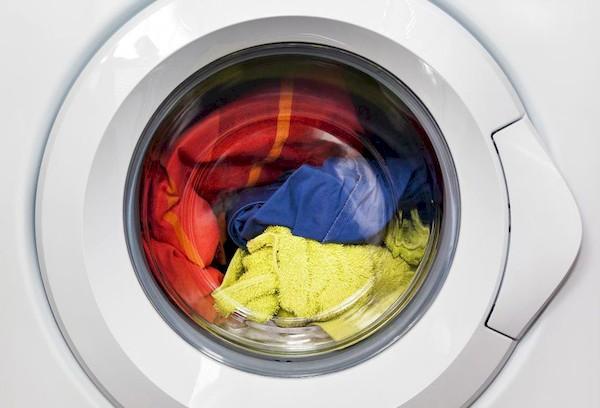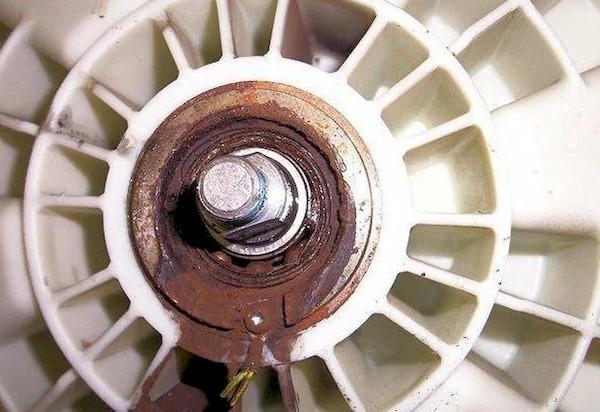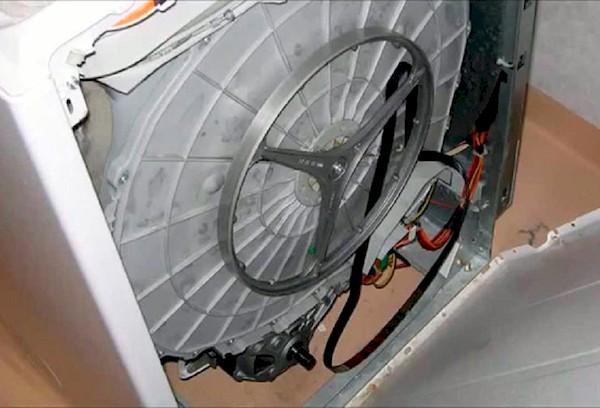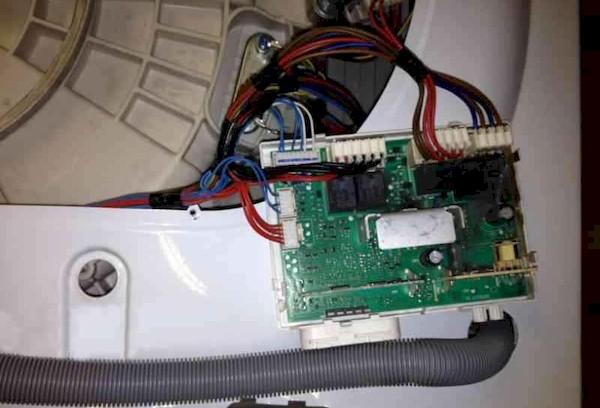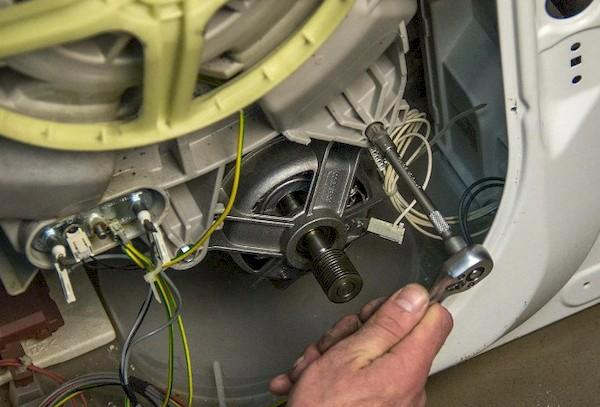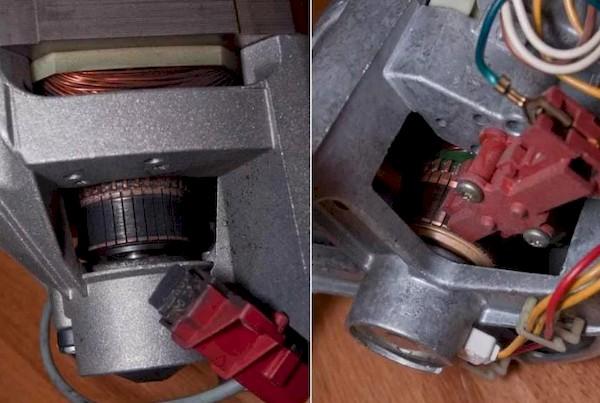Why the drum in the washing machine does not spin: frequent breakdowns and recommendations from specialists
Content:
A washing machine is an indispensable assistant in everyday life, making the washing process much easier, but even the most reliable devices can sometimes break down, causing inconvenience and requiring repairs. One of the common problems is when the drum in the washing machine does not spin.
Why doesn't the drum in the washing machine spin?
There are several reasons why the drum in the machine may stop spinning during operation. Some of them are related to technical problems, others are related to improper use of the device.
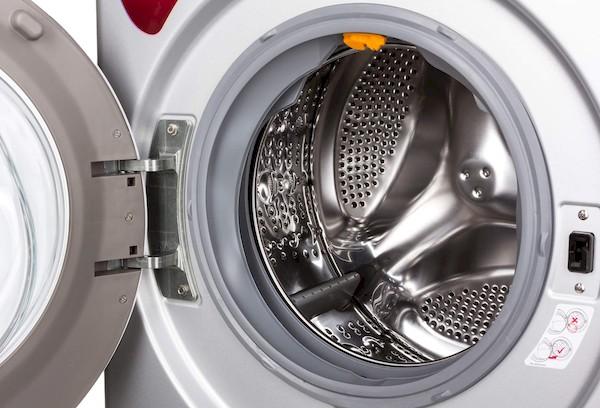
Overload
When an automatic machine is overloaded, this can lead to the drum not spinning due to several reasons:
- Firstly, when too much stuff is loaded into the machine, the drum may not spin properly. This is because the laundry inside it can get tangled, creating additional resistance to the rotation of the motor.
- Secondly, if the drum is overloaded, it may begin to vibrate and make noise, which can damage the machine itself.This is because a large number of objects can move to one side, creating an imbalance and leading to strong vibrations in the operation of the motor.
To avoid overloading the machine, it is necessary to load it in accordance with the manufacturer's instructions. In most cases, the manual indicates the maximum allowable amount of laundry that can be loaded. If there are no instructions, you can usually load the machine to 3/4 of its maximum capacity.
It's also a good idea to separate items into categories to reduce the risk of tangling during washing. If the drum still does not spin, you may need to remove some of the laundry and try again.
Foreign object entry
Another reason why the drum in the machine does not spin is that a foreign object has gotten inside it. This can happen if there is some small item in it that was not noticed when loading the laundry. For example, it might be a coin, a hair clip, a pocket knife or other small item.
When the machine starts to operate, such an object can get into the mechanisms and block the drum. This leads to the fact that the motor will not be able to rotate, which, in turn, will cause damage to the device.
To avoid foreign objects getting in, check pockets before loading laundry. If you notice that something is stuck in the drum, you need to turn off the device and try to remove the foreign body using a special tool or simply with your hands. You should never try to continue using the machine if you notice that something is stuck inside.
Bearing failure
Bearing failure is another reason why the motor has stopped spinning.A bearing is an element that ensures smooth rotation of the drum. If it is worn or damaged, it may cause the drum to move unevenly or not rotate at all.
Usually the first sign of bearing problems is the appearance of an unusual sound during washing. This could be a rubbing or grinding noise. If you hear these sounds, especially if they get louder and louder, it may be a sign that the item needs to be replaced.
Installing a new bearing is a complex and time-consuming process that is best left to professionals. If you do not know how to replace this part, then you should not try to do it yourself, as incorrect installation can lead to additional damage to the equipment.
The drive belt is broken
The drive belt is the element that transfers energy from the motor to the drum and allows it to rotate. If it breaks or comes off during washing, the drum will not spin. This can happen because the belt is worn out or because it was not installed correctly. In any case, there is only one way out, what to do in this case - replacing the drive belt.
To do this, you must first disconnect the machine from the power supply and turn off the water supply. Then you need to remove the back panel and find the drive belt. It can usually be easily removed using a screwdriver or other tool.
Once the old belt has been removed, you need to install the new one in place and make sure it is tensioned correctly. Then you need to return the back panel, connect the machine to the network and water, and check its functionality.
Control module malfunction
Another possible reason why the drum does not spin and the machine does not wash is a malfunction of the control module. He is responsible for controlling all its functions, including the rotation of the drum.
If the control module is faulty, it may stop transmitting signals to the engine. The cause of the breakdown can be both software and hardware failures.
If you suspect that this is the problem, you should contact a repair service to diagnose the problem and replace the module if necessary.
To prevent possible problems with the control module, you should regularly service the washing machine and monitor its operation. Also avoid overloading and use the equipment in accordance with the instructions.
Engine failure
The motor is the heart of the washing machine, responsible for rotating the drum and other functions. The cause of the malfunction may be overheating, electrical circuit failure, brush wear, or other problems.
To identify problems with the engine, you should diagnose the machine using a multimeter and other tools. If the cause of the problem is indeed a motor failure, then it must be replaced. Installing a new engine can be a complex procedure and is best left to the experts.
Carbon brush wear
Carbon brushes are the part of the motor that, when in contact with the commutator, allow electrical current to flow through the motor and cause it to rotate.
If they wear out, they stop contacting the commutator and can cause engine malfunction. Worn elements can also cause the motor to overload and overheat.
To prevent the machine from jamming, the carbon brushes need to be replaced.This is a relatively simple procedure that you can do yourself using the appropriate tools and replacement instructions.
To avoid problems with carbon brushes, you should regularly service your washing machine and replace worn components in accordance with the instructions. You should also avoid overloading the equipment and use it in accordance with its intended purpose.
Other reasons
In addition to the listed reasons why the drum in the machine may stop spinning or does not take in water, there are other possible malfunctions:
- Electronic board failure - This can happen if the washing machine's electronic board is overloaded or subject to overvoltage. This results in the failure of one of its parts, such as relays, transistors or diodes, which can cause the motor to malfunction and stop the drum.
- Broken wiring - This occurs if the wiring connecting the motor and the control board has been damaged or broken. This happens due to overload or aging of the wires. A break will cause the motor to fail and the drum to stop.
- Thermostat malfunction – The thermostat is the component that controls the temperature in the machine. If it fails, it will not be able to give a signal to the engine and will stop its operation.
- Solenoid Valve Failure – This occurs when the solenoid valve does not open or close due to damage or wear. It controls the water supply to the machine and if it is not working properly, the device may not fill with water, causing the drum to malfunction.
- Load sensor failure - it is designed to control the weight of laundry.If this element is faulty, it will not give a signal to the control board that things are loaded, and the machine may stop.
- Power failure – This occurs when the machine does not receive enough power. This may be due to problems with the electrical network or wiring in the equipment itself.
- Start capacitor failure - This happens when the machine's capacitor does not work properly. It is needed to start the engine, and if it does not function, the engine will not be able to start.
- Mechanical Part Failure – This occurs when any of the mechanical parts inside the device have broken or failed. For example, the gearbox that transfers the rotation of the motor to the drum may fail, causing the latter to stop.
- Door Problems – This is noted when the equipment door is not closed properly. There are sensors that monitor whether the sunroof is closed, and if it is open, the car will not start.
- Drain Valve Failure – This occurs when the drain valve that controls the release of water does not work properly. If the used liquid cannot flow out of the machine, the drum will not be able to spin.
- Improper use of equipment - this happens if the washing machine is used incorrectly, for example, too heavy objects are loaded into it, which can damage the mechanisms of the device.
Tips for preventing breakdowns
There are several tips for preventing breakdowns in washing machines and recommendations on how the drum should spin, which can help extend the life of the device and reduce the likelihood of malfunctions:
- Clean the filter and drain pump regularly - this will help avoid clogging of the water supply system and reduce the likelihood of drain valve failure.
- Make sure that the machine is not overloaded - this will prevent wear on the drive belt and reduce the load on the motor.
- Check the condition of the carbon brushes regularly - they need to be replaced when they wear out to prevent engine damage.
- Do not use too much detergent - this can cause wear on the bearings and increase the likelihood of filter and drain pump clogging.
- Check the temperature of the water entering the machine - if it is too hot, it can cause wear on the O-rings and damage the electronic components of the device.
- Check the condition of the door regularly - if it does not close properly, this may cause problems with the control module.
- Do not load the machine with items that could damage the mechanisms, such as metal objects, hard toys, or other items that could damage the drum, belt, or other parts of the machine.
Following these tips can help increase the life of your washing machine and reduce the likelihood of breakdowns. It is also recommended to regularly carry out preventive maintenance and, if any problems arise, contact specialists for repairs.
